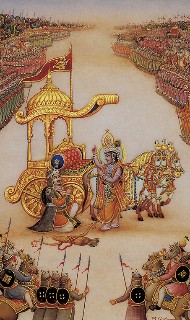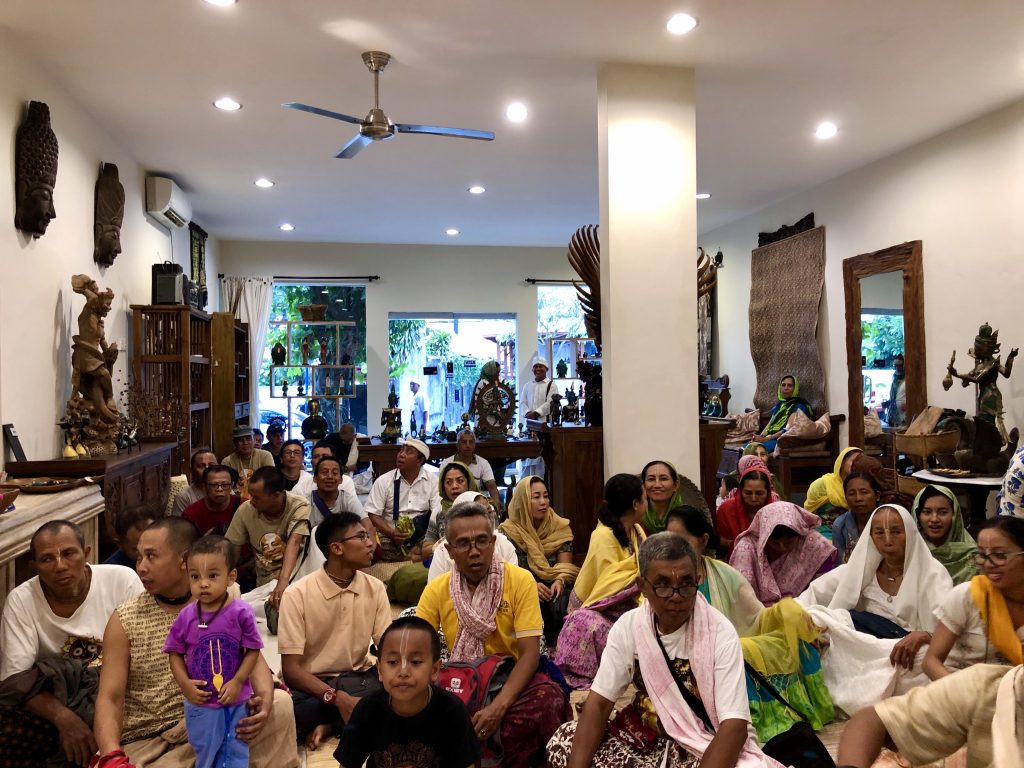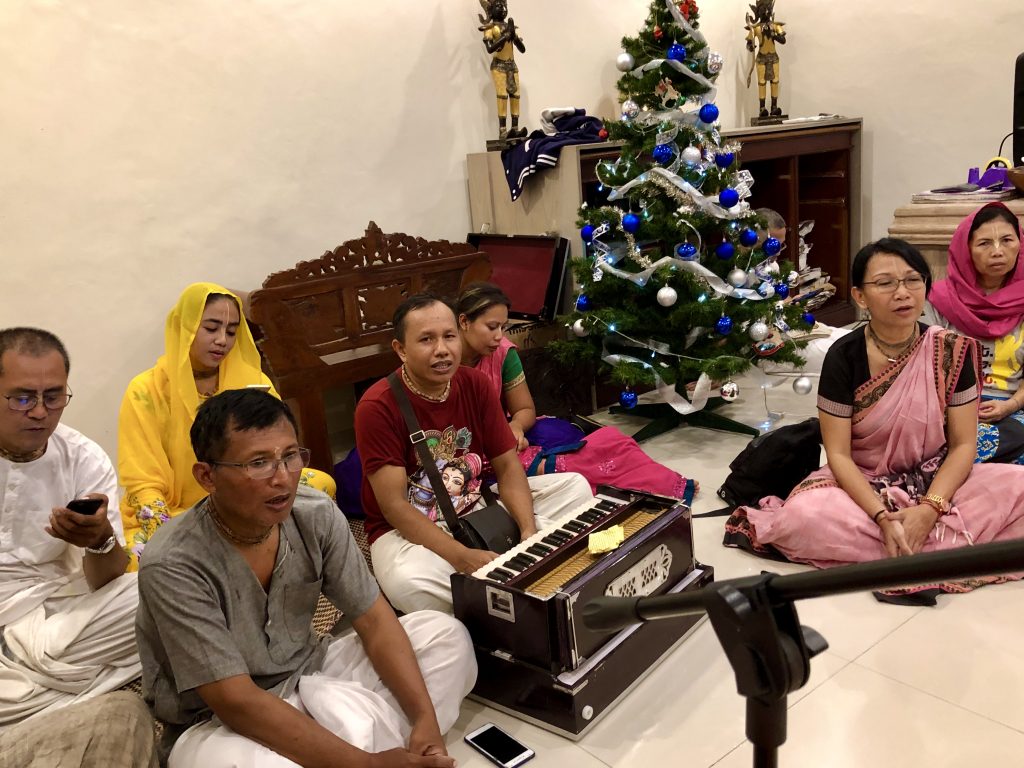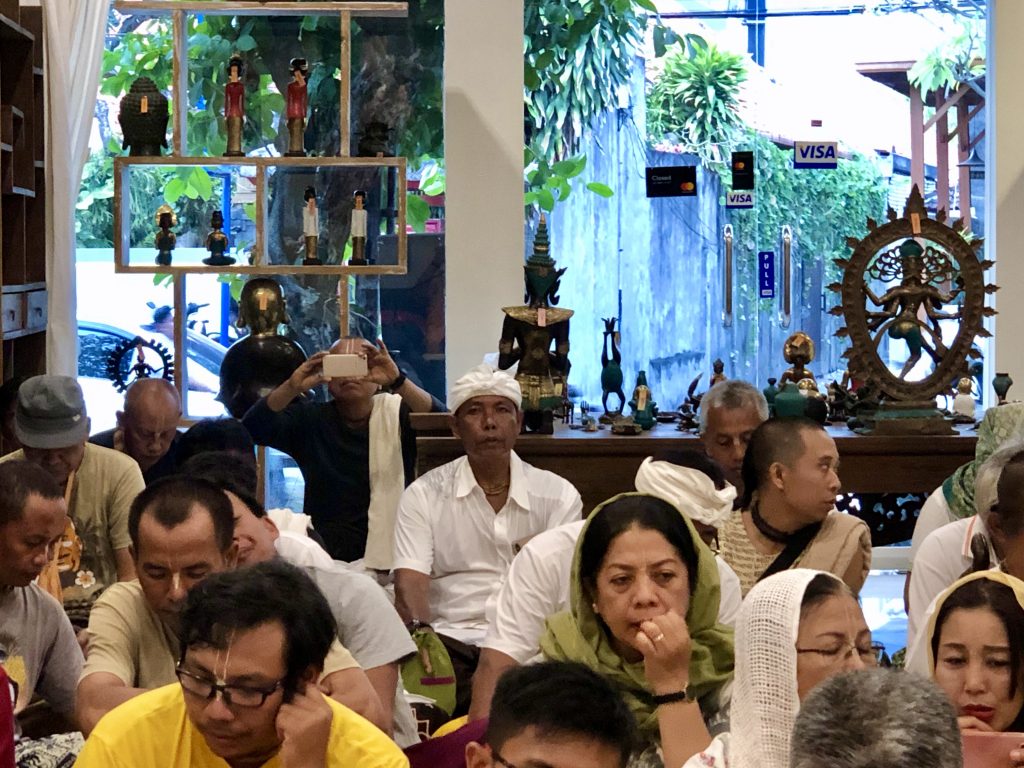
HH Indradyumna Swami’s health update.
Indradyumna Swami: Last week here in Durban, South Africa, I visited my dermatologist – a skin specialist. Unfortunately, he found a Malignant Melanoma skin cancer on my face. The tumor was very near to the first one I had five years ago. It is called recurrence cancer. I had a PET/CT scan to see if this second tumor had metastasized (spread) throughout my body. The result came back clear. It had not spread. Nevertheless, as a precaution, my oncologist (cancer doctor) asked that while surgically removing this second tumor, the doctor also perform a neck dissection and remove a number of lymph nodes to ensure the Melanoma had not spread there. It sometimes happens that PET scans cannot see small traces (micro-metastasis) of Melanoma.












 Was Dylan empowered to sing of the coming of the Acharya of the Shri Chaitanya Mahaprabhu line of disciplic succession? As crazy as it sounds, at least to some disciples it makes perfect sense that he could be the prophetic voice of a minstrel who was planted by the will of the Supreme Lord into the crowd of the day’s social rebels. In his song “Lay Down Your Weary Tune”—reminiscent of the Bhagavata’s 2nd canto of describing the Supreme Lord in Nature—he sang of God’s endless orchestra in the sky and ocean. Many devotees consider that his “Mr. Tambourine Man” is a prophecy of the coming of Shrila Prabhupada and of the sankirtana movement. His “It’s All Over Now, Baby Blue” speaks of the hopelessness of modern civilization.
Was Dylan empowered to sing of the coming of the Acharya of the Shri Chaitanya Mahaprabhu line of disciplic succession? As crazy as it sounds, at least to some disciples it makes perfect sense that he could be the prophetic voice of a minstrel who was planted by the will of the Supreme Lord into the crowd of the day’s social rebels. In his song “Lay Down Your Weary Tune”—reminiscent of the Bhagavata’s 2nd canto of describing the Supreme Lord in Nature—he sang of God’s endless orchestra in the sky and ocean. Many devotees consider that his “Mr. Tambourine Man” is a prophecy of the coming of Shrila Prabhupada and of the sankirtana movement. His “It’s All Over Now, Baby Blue” speaks of the hopelessness of modern civilization.

 By His Divine Grace A.C. Bhaktivedanta Swami Prabhupada
By His Divine Grace A.C. Bhaktivedanta Swami Prabhupada By Guru das
By Guru das By Damodar Nityananda Dasa
By Damodar Nityananda Dasa

















 By Oxford Centre for Hindu Studies
By Oxford Centre for Hindu Studies By Kaunteya das
By Kaunteya das



